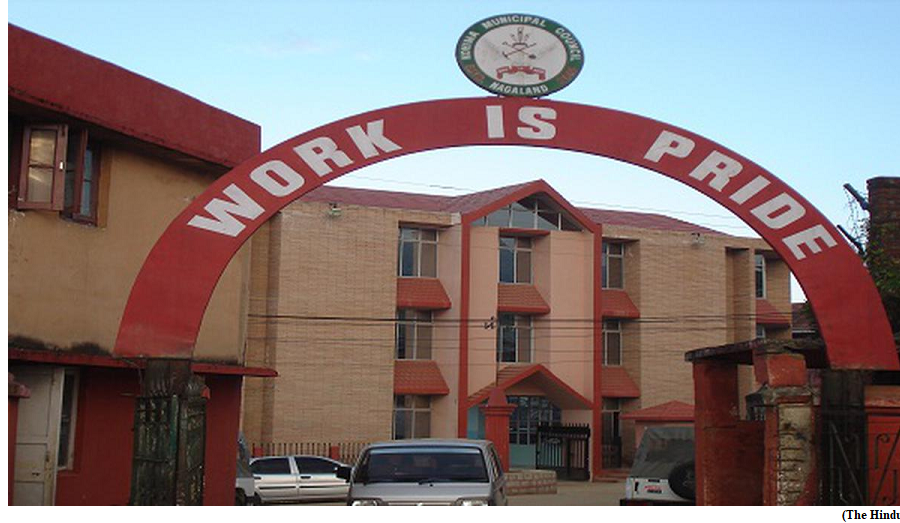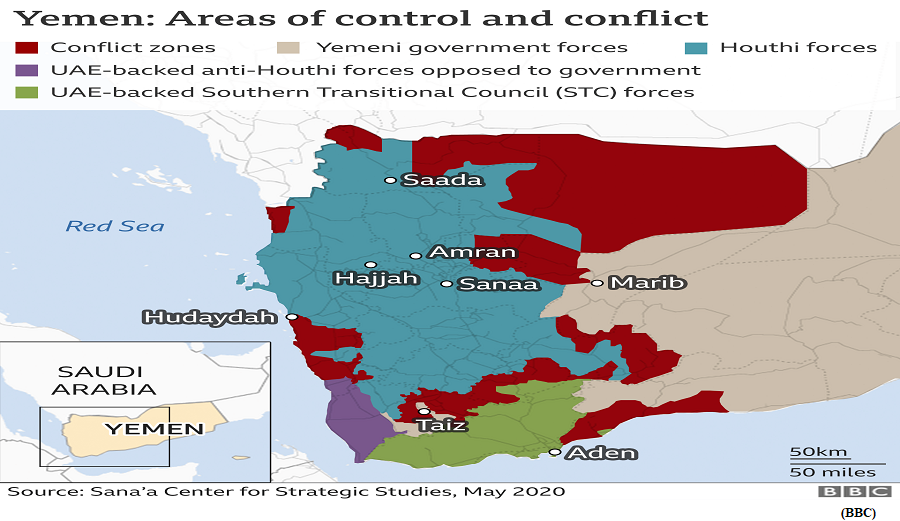Nagaland’s municipal tightrope (GS Paper 2, Governance)

Why in news?
- In March 2023, the Nagaland State Government preferred to be in contempt of the Supreme Court than face the wrath of the community-based organisations by repealing the Nagaland Municipal Act of 2001.
Details:
- This led to the cancellation of the State Election Commission’s notification for holding elections to Nagaland’s 39 urban local bodies (ULBs) with 33% of the seats reserved for women.
- The Supreme Court has however, stayed the notification cancelling the civic body polls. It was in 2023, for the first time, that Nagaland elected two women to power in the recent Assembly elections.
Why is there opposition to ULB polls?
Have such polls ever been held in Nagaland?
- The first and only civic body election in Nagaland was held in 2004 without any reservation of seats for women.
- The State government amended the 2001 Municipal Act in 2006 to include 33% reservation for women in line with the 74th Amendment. This triggered widespread opposition forcing the government to indefinitely postpone the ULB polls in 2009.
- Efforts to hold the elections in March 2012 met with strong protests and in September 2012, the State Assembly passed a resolution to exempt Nagaland from Article 243T of the Constitution which is related to the reservation for women.
- This resolution was revoked in November 2016 and elections to the civic bodies with 33% reservation were notified a month later. The notification led to widespread mayhem in which two people were killed in large-scale violence and arson.
- This made the government declare the process to conduct election null and void in February 2017.
Why did the govt. decide on ULB polls this time?
- Under pressure from the Supreme Court, the current government laid the ground for holding ULB polls after consultations with various stakeholders, including churches, NGOs, and tribal bodies in March 2022. The State Election Commission on March 9 notified that the polls would take place on May 16.
- The tribal bodies and civil society organisations threatened to boycott the polls until the “borrowed” Municipal Act of 2001 factoring in women’s reservation is “reviewed and rewritten in complete consonance of the voice of the Naga people” so that it does not infringe upon Article 371A.
- The government succumbed to public pressure and repealed the Municipal Act with immediate effect as the people “cannot be compelled” to participate in the elections.
What is the way forward?
- The groups against reservation for women want a “guarantee” that the 33% quota would not violate the provisions of Article 371A.
- Before “rushing to conduct” the ULB elections, they suggested that the duration of the reservation should be capped at two tenures and demanded that the post of chairperson should not be reserved for women.
- The Naga Mothers’ Association (NMA) said that the State government erred in not listening to or consulting with women’s organisations before taking the decision to repeal the Municipal Act.
What the Supreme Court said about it?
- On April 17, the Supreme Court pulled up the Nagaland government for adopting an “ingenious method” of repealing the Municipal Act to evade the undertaking given to the court for holding the polls.
- It also noted “nothing has so far emerged (with respect to Article 371A) to advance a plea that religious or social practices of Nagas or Naga customary law and procedure denies the right of equality to women insofar as the participatory process is concerned in such elections”.
What are the latest developments in Yemen?
(GS Paper 2, International Relation)
Context:
- Hundreds of prisoners captured during the war in Yemen were reunited with their families between April 14 to 16 amid diplomatic efforts to halt the conflict.
- The main warring sides in Yemen are the Iran-backed Houthis and the pro-Yemen government, Saudi-led coalition.

How did the prisoner swap happen?
- The two opposing sides had in March agreed to release 887 detainees after a ten-day meeting in Switzerland. The parties also agreed to meet again in May to discuss more such releases, the International Committee of the Red Cross (ICRC) said.
- The large-scale prisoner swap has given the people hope for a permanent ceasefire in Yemen.
What is the Stockholm Agreement?
- The warring parties in control of parts of Yemen had signed the Stockholm Agreement in December 2018 whereby they had committed to freeing conflict-related detainees.
- The agreement brokered by the United Nations had three main components — the Hudayah agreement, the prisoner exchange agreement, and the Taïz agreement.
- The Hudayah agreement included a ceasefire in the city of Hodeidah and other clauses like no military reinforcements in the city and strengthened UN presence.
- In November 2018, hundreds of people were killed in clashes in Hodeidah, an important port in Yemen, when government loyalists supported by a Saudi-led coalition launched an attack to oust the Iran-backed Houthi rebels from the Red Sea city.
- The Taïz agreement includes the formation of a joint committee with participation from civil society and the UN.
How did the war in Yemen begin?
- The conflict in Yemen began in 2011 as part of the Arab Spring protests. President Ali Abdullah Saleh was forced to hand over power to his deputy, Abdrabbuh Mansour Hadi.
- Mr. Hadi found himself faced with an insurmountable task of tackling Yemen’s economic and security problems.
- The Houthis, backed by Iran, took advantage of Mr. Hadi’s weak control and captured the Saada province in the north, and then Sana’a, the capital of Yemen, in 2014.
- The thought of Iran-backed Houthis in control of Yemen bothered neighbouring Saudi Arabia due to its differences with Iran.
- Saudi Arabia then led a coalition that included other Arab countries and sent troops to Yemen in 2015. However, they were unable to oust Houthis from Sana’a as well as from the north of the country.
- The war has continued since then and has only ceased once in April 2022, when the Houthis and the Saudi-led coalition announced a two-month ceasefire ahead of Ramzan, the holy month of Islam. This was Yemen’s first nationwide truce in six years.
How has this affected Yemen?
- According to the UN, Yemen is now the largest humanitarian crisis in the world with 80% of its population dependent on aid and protection.
- Over three million people have been displaced from their homes since 2015, and public service sectors like healthcare, water, sanitation, and education have either collapsed or are in a dire situation.
- Economically too, Yemen is in the trenches. It has lost $90 billion in economic output and more than 6,00,000 people have lost their jobs. More than half of the country’s population is living in extreme poverty.
World Heritage Day or International Day for Monuments and Sites (IDMS)
(GS Paper 1, Culture)
Why in news?
- World Heritage Day or International Day for Monuments and Sites (IDMS) was being celebrated with the theme ‘Heritage Changes’.

About World Heritage Day:
Background:
- In 1982, the International Council on Monuments and Sites (ICOMOS) announced 18 April as World Heritage Day. This was approved by the General Assembly of UNESCO in 1983, to enhance awareness about the importance of cultural heritage, and monuments and conserving them.
UNESCO's World Heritage Sites:
- The United Nations Educational, Scientific and Cultural Organisation (UNESCO) has a total of 1,154 monuments designated as world heritage sites from all over the world.
- Apart from India only Italy, Spain, Germany, China and France have 40 or more World Heritage sites.
- Out of 40 World Heritage Inscriptions, 10 have been done in the last 9 years with a wide range of diversity from across India. India’s Tentative List has increased by 37 from 2014 to 2022, from 15 in 2014 to 52 in 2022.
Buddhist heritage:
- The Government of India, has been focussing on preserving the Buddhist heritage and taking the message of Lord Buddha across the world.
- In November 2021, Prime Minister inaugurated the Kushinagar International Airport in Uttar Pradesh to facilitate easy access to the Mahaparinirvana Temple, where Lord Buddha attained nirvana.
- In May 2022, Prime Minister laid the foundation stone for a technologically-advanced India International Centre for Buddhist Culture and Heritage in Lumbini at a cost of 100 crore at the Lord Buddha’s birthplace.
- The Ministry of Tourism is developing the Buddhist circuit around Kushinagar Sravasti and Kapilvastu as a part of the SWADESH Darshan scheme.
- Overall, several projects for the development of Buddhist circuits in Uttar Pradesh, Madhya Pradesh, Bihar, Gujarat and Andhra Pradesh are already nearing completion.
Way Forward:
- The government is also taking a ‘Whole of Government’ approach to preserve Indian culture and heritage. Several central ministries like the Ministry of Tourism, Ministry of Culture, Ministry of Civil Aviation, Ministry of Tribal Affairs, initiatives like Namami Gange and Swachh Bharat etc all are converging together for holistic outcomes with respect to protecting Indian heritage.




